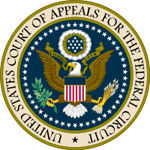 As we have been reporting, the U.S. Patent Office has requested comments on the trial proceedings under the America Invents Act. Out of the 17 issues outlined, the Office highlighted two for which it would especially appreciate public feedback: (1) the use of the broadest reasonable interpretation ("BRI") standard for claim construction, and (2) the perceived difficulty related to amending the claims. Next month, on November 3, 2014, the Federal Circuit will hear case 14-1301 -- the first oral argument for the first appeal of an inter partes review ("IPR") final written decision for the first IPR ever filed (IPR2012-00001). The IPR case caption was Garmin USA, Inc. (Petitioner) v. Cuozzo Speed Technologies LLC (Patent Owner), but the appeal is fashioned as "In re Cuozzo Speed Technologies LLC" because Garmin withdrew from the appeal. According to the Stipulation of Withdrawal (D.I. 17), Garmin "agreed not to participate in any appeal of the final written decision" pursuant to a settlement agreement. The Office intervened to oppose Cuozzo's appeal.
As we have been reporting, the U.S. Patent Office has requested comments on the trial proceedings under the America Invents Act. Out of the 17 issues outlined, the Office highlighted two for which it would especially appreciate public feedback: (1) the use of the broadest reasonable interpretation ("BRI") standard for claim construction, and (2) the perceived difficulty related to amending the claims. Next month, on November 3, 2014, the Federal Circuit will hear case 14-1301 -- the first oral argument for the first appeal of an inter partes review ("IPR") final written decision for the first IPR ever filed (IPR2012-00001). The IPR case caption was Garmin USA, Inc. (Petitioner) v. Cuozzo Speed Technologies LLC (Patent Owner), but the appeal is fashioned as "In re Cuozzo Speed Technologies LLC" because Garmin withdrew from the appeal. According to the Stipulation of Withdrawal (D.I. 17), Garmin "agreed not to participate in any appeal of the final written decision" pursuant to a settlement agreement. The Office intervened to oppose Cuozzo's appeal.
We reported on this final written decision last year in a post that explained the technology involved (see "The First IPR Decision -- A Win for the Patent Challenger"). Not surprisingly, one of the issues Cuozzo is appealing is technical in nature –- whether the Patent Trial and Appeal Board ("PTAB") erred in cancelling one of the claims as invalid under 35 U.S.C. § 103. The other three issues appealed are more directly focused on the implementation of the AIA post-issuance procedures, including the above-referenced two issues highlighted by the Office.
The first appealed issue was "whether the PTAB lacked authority to institute IPR for claims 10 and 14 on grounds of unpatentability not identified in the Petition." Garmin's petition contained seven grounds of unpatentability, including one 102(e) challenge of claim 10, and six 103 challenges of three claims in view of various prior art references. The Board did not think that claim 10 was anticipated based on its claim construction. Instead, it instituted the trial on a combination of cited references that were not specifically combined in the petition. Cuozzo argued that 35 U.S.C. § 314(a) prohibits the Board from doing so: "THRESHOLD.--The Director may not authorize an inter partes review to be instituted unless the Director determines that the information presented in the petition filed under section 311 and any response filed under section 313 shows that there is a reasonable likelihood that the petitioner would prevail with respect to at least 1 of the claims challenged in the petition." The Office responded by alleging that 35 U.S.C. § 314(d) prohibits appeals as to the grounds of institution: "NO APPEAL.--The determination by the Director whether to institute an inter partes review under this section shall be final and nonappealable." Of course, on its face, this provision appears to be directed to the decision about whether or not to institute the IPR, not about how it is instituted. Correspondingly, Cuozzo, in reply, pointed out that under the Office's interpretation, a decision to institute an IPR under 35 U.S.C. § 101 would not be appealable, even though it is prohibited by the statute.
The patent community will be eagerly anticipating the outcome of the remaining two issues. The second issue identified by Cuozzo was "[w]hether the BRI standard applies to IPR, and whether the PTAB erred by construing the term 'integrally attached' as 'discrete parts physically joined together as a unit without each part losing its own separate identity' to exclude an embodiment of the invention." Then, the final issue raised by Cuozzo was "[w]hether the PTAB erred in denying Cuozzo's motion to amend the claims." The Federal Circuit usually makes an MP3 audio recording of the argument available within about 24-48 hours of the argument. And, of course, interested members of the patent community can attend the argument in person (subject to space limitations) in Courtroom 402, at the Howard T. Markey Federal Courts Building, 717 Madison Place, N.W.
Washington D.C. We intend to report on the argument shortly after it occurs, and we hope to be able to predict which way the panel might lean on these important two issues.